- Home
- slideshows
- miscellaneous
- 9 of the very first editions of famous American newspapers
9 of the very first editions of famous American newspapers
1. New York Times

2. Washington Post
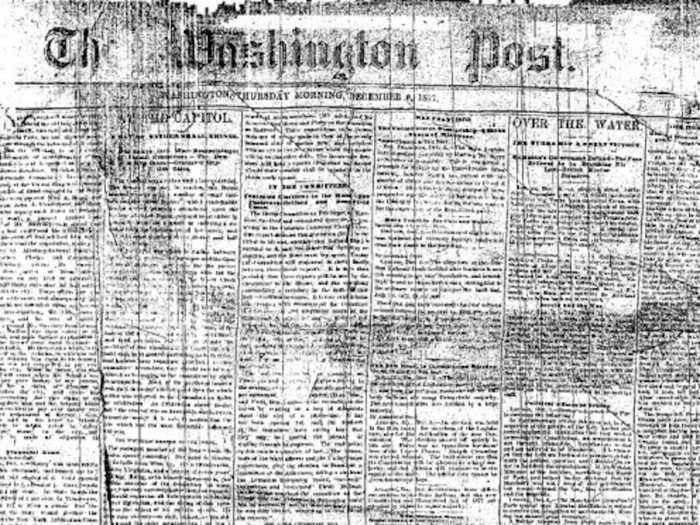
First issue: December 6, 1877.
The Washington Post debuted as a four-page daily that cost three cents. Like the Times, it bore a headline-free front page covered with text.
The first issue reported news from Washington DC and beyond, including the war in Constantinople, the failing health of Pope Pius IX, a column devoted to New York City news, and "an old bachelor [who] died of the combined effects of a cat-bite with his own folly."
The paper flip-flopped from strongly Democratic to conservative Republican while trying to establish its identity. "The Washington Post was not the leading light in DC until well into the 20th century, when Eugene Meyer bought it at a bankruptcy sale" in 1933, Schudson said.
3. San Francisco Chronicle
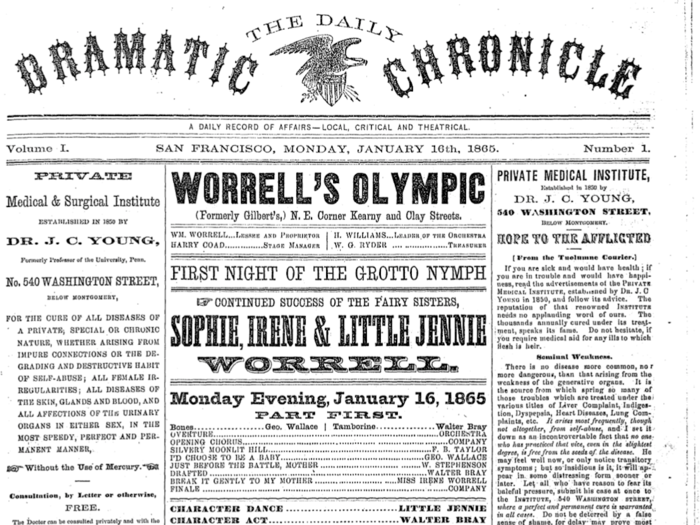
First issue: January 16, 1865.
During the heyday of the Wild West, teenage brothers Charles de Young and Gustavas de Young borrowed a $20 gold piece to launch their newspaper, The Daily Dramatic Chronicle, which eventually became the San Francisco Chronicle. A third brother, Michael, later helped Charles run the paper.
Their ambitious mission was to "enlighten mankind … and San Francisco … of actions, intentions, sayings, doings, movements, successes, failures, oddities, peculiarities, and speculations, of us poor mortals here below."
Though it reported the news of the San Francisco Bay Area, the front page was predominantly advertisements, which were crucial to its survival, Schudson said. "My assumption is that people read newspapers like they read books. You look for the heart of the matter inside," he said of the cover.
4. Baltimore Sun
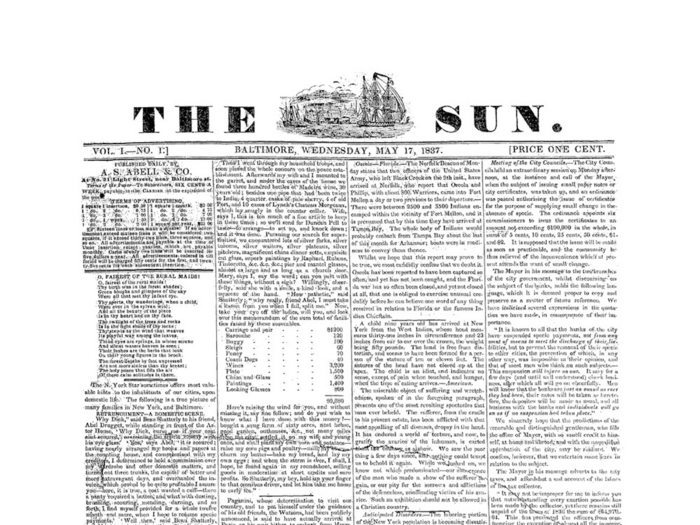
First issue: May 17, 1837.
The Baltimore Sun's inaugural design may have followed the pattern of its peers — no headline, columns of dense text — but its slogan, "Light for All," has remained the same. Debuting at four pages, the first edition was yours for one cent.
"The Baltimore Sun was an interesting precursor [to modern newspapers] because it was one of the so-called penny papers, all of which began in the 1830s," Schudson said. "Those newspapers sold cheaply on the street rather than by subscription only to reach a broader audience."
Founder Arunah S. Abell's recipe for success may have been his nonpartisan political agenda, which was a rebellious approach for that era, according to Britannica.
5. Los Angeles Times
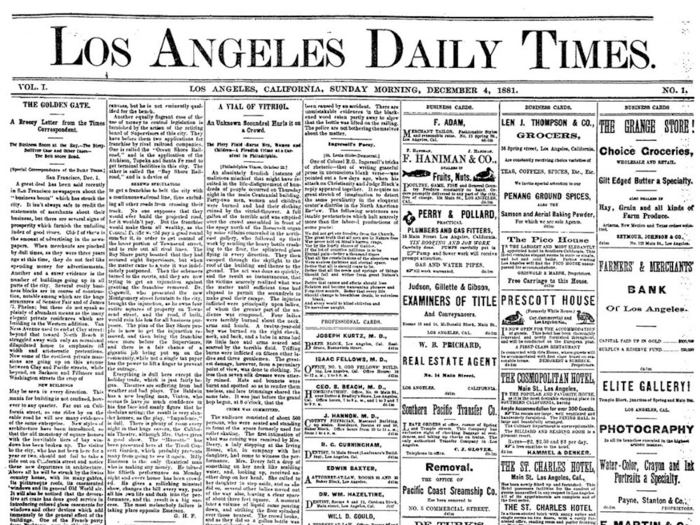
First issue: February 4, 1881.
Originally a penny paper, The Los Angeles Times launched as a four-page broadsheet — slighter bigger than a tabloid — called the Los Angeles Daily Times.
The front page of its first edition was split vertically: editorial on the left-hand side and the ads to pay for it on the right.
Los Angeles Times had a strong political influence and helped shape the culture of southern California.
It had a rocky start leadership-wise and changed hands a few times, but in 1882, former military officer Harrison Gray Otis came on board as editor and slowly reversed the paper's fortune by toning down its Republican voice to make it more centrist, hiring respected journalists, and opening news bureaus worldwide to broaden the paper’s scope.
6. Wall Street Journal
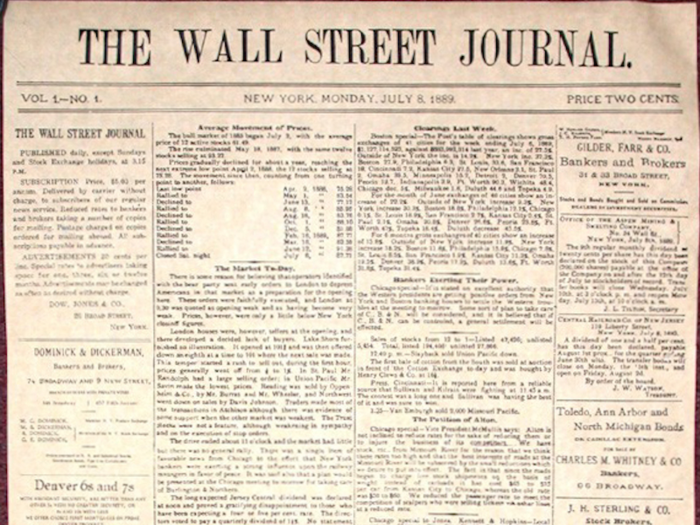
First issue: July 8, 1889.
Like many of its predecessors, the Wall Street Journal launched as a four-page newspaper. But unlike many of its peers, it had a niche — business and financial news — and media historians believe that's what set it up for success.
"The Wall Street journal was a business paper from the beginning. It identified a small and elite population to cater to," Schudson said. The paper's first-ever front page reported stock market activity, of course, and features such as "bankers exerting their power."
Founder Charles H. Dow didn't stray from this vision until the Great Depression, when the paper started to include a few features on other topics.
7. Detroit Free Press
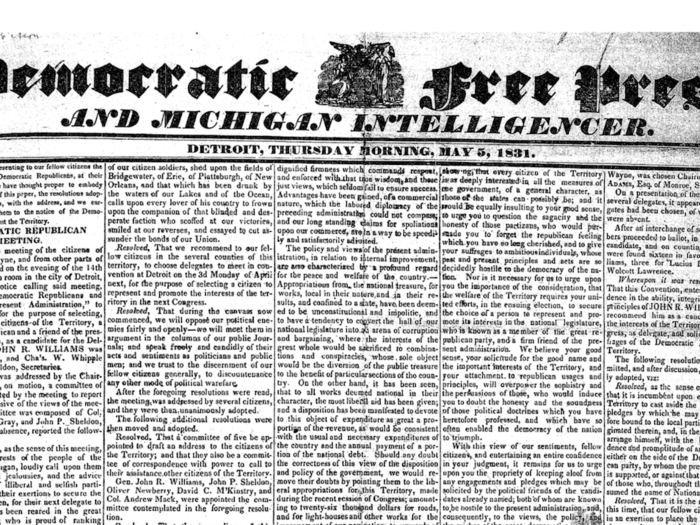
First issue: May 5, 1831.
The Detroit Free Press launched as a politically independent paper, though it was called The Democratic Free Press and Michigan Intelligencer until four years later, when it switched to its current name.
It became a daily while Detroit was still a frontier town. It advocated statehood, became one of the first newspapers to publish a Sunday edition, and went on to see success covering the Civil War.
8. Boston Globe
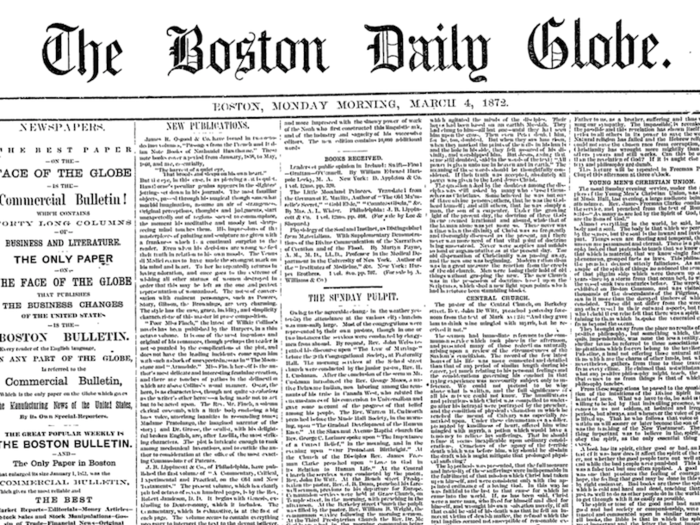
First issue: March 4, 1872.
Six businessmen — led by Eben Jordan, founder of retail store Jordan Marsh that is now Macy's — launched the Boston Globe as the Boston Daily Globe.
Its front page appeared to mix promotions for local religious congregations with advertisements, and it had local and international news inside. The paper didn't start seeing success until about five years later, when, under new leadership, it started publishing twice a day and incorporating big headlines, according to Encyclopedia Britannica.
At the same time, the paper also ramped up its local coverage and started buying into "yellow journalism," or sensationalist news — mostly crime. These became common tactics for reaching a broader audience around the end of the 19th century, Campbell said.
9. Houston Chronicle
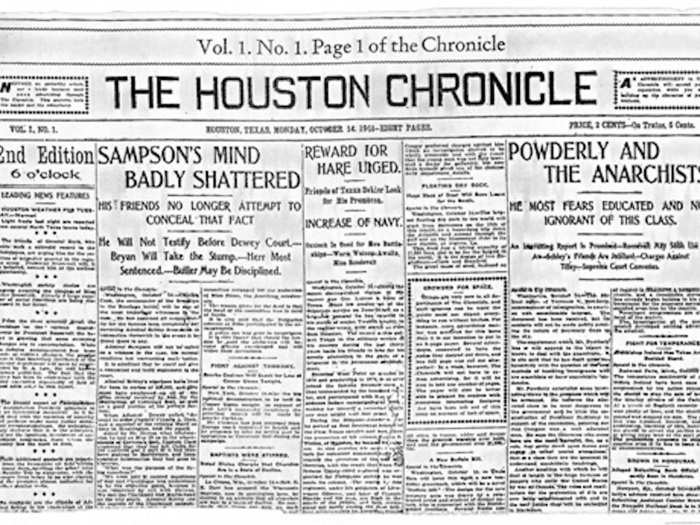
First issue: October 14, 1901.
The Houston Chronicle was a success from the start, when it was founded by a strong-willed newspaper reporter who funded it using a money from a wise investment — and from a few of his like-minded friends, according to the Texas Historical Association.
It sold for two cents — by 20th century standards, this was cheap — and shortly after launch, its circulation was about one tenth the population of Houston.
The front page of the debut issue boasted headlines like "Sampson's Mind Badly Shattered," referring to a Navy admiral from the Spanish American War, and "Powderly and the Anarchists" about an American labor union leader.
Popular Right Now
Popular Keywords
Advertisement